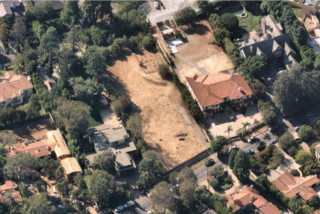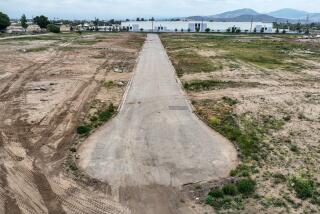A National Park Amid the Grime?
- Share via
CHICAGO — The marshy 68 miles of shoreline that stretch along the shipping channels of this city’s grimy industrial underbelly hardly make for a vista of pristine natural beauty. But the wasteland of steel and auto plants, abandoned factories and moldering waste dumps that choke Chicago’s far South Side may well be a perfect site for a national recreation area now under consideration by federal park officials.
Hidden by trestles, skeletons of vacant buildings and thick forest growth are natural wonders rarely seen by Chicago’s populace. There are graceful white egrets, armies of beavers and dozens of bird varieties. Bald eagles have been sighted here. The area’s waterways--the Little and Big Calumet rivers and the Cal-Sag Canal--contain nesting areas for the rare black-crowned night-heron and several species of endangered blackbirds.
A group of local environmentalists is pressing for national park status for the area, insisting that federal officials watch over the shoreline’s wildlife. But because the riverfront property is all privately owned--and in some spots, built up with factories and heavy machinery--the park’s supporters are asking for a unique compromise. They want the region’s 61 square miles of habitat to be designated as a federal recreation area, even if it means that the wildlife coexists with factory life.
“This is one of the most ecologically viable degraded areas in the country, if there is such a thing,” said James Landing, a professor of geography at the University of Illinois at Chicago and one of the authors of the park proposal. “Geographically, it’s still frontier country. People here are unfamiliar with it; they don’t want to live there or go there.”
As ragged and uninhabitable as this South Chicago wilderness is, its solitude has allowed animals and birds to migrate and breed here in increasing numbers in recent decades. Wildlife also was aided by the downturn in the Rust Belt economy, which shuttered steel plants and other factories along the riverfront, cleaning the region’s air and water and emptying the waterways of humans.
Hoping to win park status before industrialists return to Chicago’s south waterways, environmentalists are turning to an idea that has won favor in other cities. They are asking federal park officials to come in and act as liaisons between property owners and preservationists, protecting the region’s wildlife without going through the expensive and balky process of buying shoreline land. Similar efforts have transformed waterfront properties in Atlanta and Cleveland, where the Cuyahoga River, once famous for its burning oil slicks, now is a tourist attraction.
Federal officials have become experienced in overseeing privately owned parkland in recent years, said Angie Tornes, a river protection specialist for the U.S. National Park Service in Milwaukee. They have even combined private and public parkland, such as the sprawling Mississippi River National Recreation Area. “It can be done,” Tornes said. “The question is whether that’s the right way to go here.”
After studying the proposal and considering other options--ranging from no action to buying some of the riverfront properties--over the last three months, the park service is preparing an answer. A report is due in January, Tornes said.
Chicago Alderman John Buchanan, whose 10th Ward contains much of the shoreline, has his own answer: “No way.” His disdain for the idea, Buchanan said, is shared by several owners of large tracts along both Calumets. “This isn’t a nice beach area,” Buchanan scoffed. “This is a plain old steel mill site that I want to bring back with new industry.” He added that “the 75,000 people who lost their jobs on the line over the last 20 years would agree with me.”
Already, Buchanan insisted, developers who have taken over now-closed Republic and U.S. Steel factory sites are trying to bring in new ventures. “They’re all against this,” Buchanan said.
The councilman also is suspicious of claims that the riverfront is a natural nesting site for rare species. “All they have to show so far is a red-necked pigeon. It didn’t look so rare to me.”
Worried that the waterways could become the site of industrial expansion, Landing and preservationist supporters of the park idea are pressing for an answer now--even though the idea has bounced around government circles since the 1980s. The proposal picked up steam last year when the park service was ordered to look into its feasibility as part of an omnibus national parkland management bill passed by Congress.
Even if the park service buys into his proposal, Landing knows it will not be easy winning over landowners and politicians like Buchanan. And Chicago Mayor Richard M. Daley, who has remained neutral on the idea, has long bent over backward to developers seeking to bring new factories--and jobs--to the city.
Landing is placing his faith in the area’s harsh terrain and inaccessibility. As long as the riverfront is ignored, shunned as a forbidding place, he insisted, the park proposal will likely remain a possibility. “We think it’s the best and most realistic use of that land,” he said.
More to Read
Sign up for The Wild
We’ll help you find the best places to hike, bike and run, as well as the perfect silent spots for meditation and yoga.
You may occasionally receive promotional content from the Los Angeles Times.






